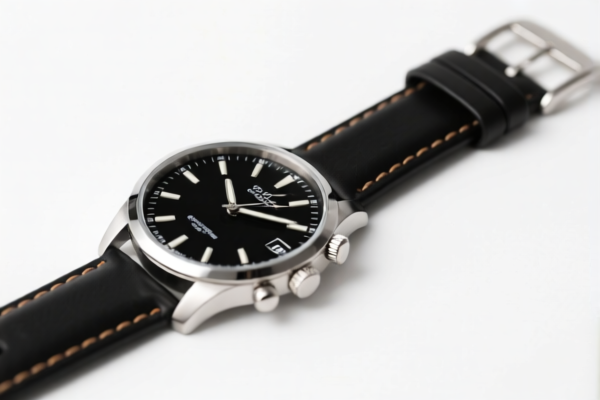| HS Code | Official Doc | Tariff Rate | Origin | Destination | Effective Date |
|---|---|---|---|---|---|
| 4115100000 | Doc | 55.0% | CN | US | 2025-05-12 |
| 4115200000 | Doc | 37.5% | CN | US | 2025-05-12 |
| 3926909989 | Doc | 42.8% | CN | US | 2025-05-12 |
| 3901909000 | Doc | 61.5% | CN | US | 2025-05-12 |




Okay, let's break down the HS codes and tax implications for your "WATCH BAND" declaration. Here's a structured analysis to help you understand the classification and potential costs.
Understanding HS Codes: A Quick Primer
HS codes (Harmonized System codes) are internationally standardized codes used to classify traded products. The first two digits generally indicate the chapter, the next two the subheading, and further digits provide more specific details. Here's how to interpret the codes you provided:
- Chapter 41: Hides, skins and other leather
- Chapter 39: Plastics and articles thereof
- Chapter 3901: Polymers of ethylene, in primary forms
Detailed Analysis of Your HS Codes
Let's go through each code individually:
1. HS Code: 4115.10.00.00 – Composition leather with a basis of leather or leather fiber, in slabs, sheets or strip, whether or not in rolls
- 41: Hides, skins and other leather
- 15: Composition leather
- 10: Specifically, composition leather in slabs, sheets or strips.
- Tax Implications:
- Basic Duty: 0.0%
- Additional Tariff: 25.0% (This will increase to 30% after April 2, 2025)
- Total Tax: 55.0%
- Important Note: This code applies to composition leather with a basis of leather or leather fiber. Ensure your watch bands meet this definition.
2. HS Code: 4115.20.00.00 – Parings and other waste of leather or of composition leather, not suitable for the manufacture of leather articles; leather dust, powder and flour
- 41: Hides, skins and other leather
- 15: Composition leather
- 20: Specifically, waste or unsuitable materials from leather/composition leather.
- Tax Implications:
- Basic Duty: 0.0%
- Additional Tariff: 7.5% (This will increase to 30% after April 2, 2025)
- Total Tax: 37.5%
- Important Note: This code is for waste materials. If your watch bands are made from usable composition leather, this code is incorrect.
3. HS Code: 3926.90.99.89 – Other articles of plastics and articles of other materials of headings 3901 to 3914: Other: Other Other
- 39: Plastics and articles thereof
- 26: Articles of plastics and articles of other materials
- 90: Other articles
- 99: Other
- 89: Other
- Tax Implications:
- Basic Duty: 5.3%
- Additional Tariff: 7.5% (This will increase to 30% after April 2, 2025)
- Total Tax: 42.8%
- Important Note: This code is a "catch-all" for plastic articles. It's often used when a more specific code doesn't apply.
4. HS Code: 3901.90.90.00 – Polymers of ethylene, in primary forms: Other: Other: Other
- 39: Plastics and articles thereof
- 01: Polymers of ethylene, in primary forms
- 90: Other
- 90: Other
- 00: Other
- Tax Implications:
- Basic Duty: 6.5%
- Additional Tariff: 25.0% (This will increase to 30% after April 2, 2025)
- Total Tax: 61.5%
- Important Note: This code applies to the raw plastic material itself. If your watch bands are made from this plastic, you'll likely use a different code (like 3926.90.99.89).
Recommendations & Key Considerations:
- Material Composition is Crucial: The most important factor in determining the correct HS code is the exact material your watch bands are made from. Is it genuine leather, composition leather (with a leather basis), plastic, or a combination?
- Review the Detailed Code Descriptions: Always refer to the official HS code nomenclature for the full and precise definitions of each code.
- Consider the April 2, 2025 Tariff Changes: Be aware of the upcoming tariff increases.
- Provide More Details: If possible, provide more information about the watch band's construction (e.g., percentage of leather vs. plastic, specific type of plastic) to help refine the classification.
- Check for Certifications: Depending on the material and intended market, you may need certifications (e.g., REACH compliance for plastics, leather traceability).
- Single Declaration: If your watch bands are made of multiple materials, you may need to declare them as separate components or find a composite HS code if available.
Disclaimer: I am an AI assistant and cannot provide definitive customs classification advice. This information is for general guidance only. It is always best to consult with a qualified customs broker or import specialist for accurate classification and compliance.
Customer Reviews
No reviews yet.